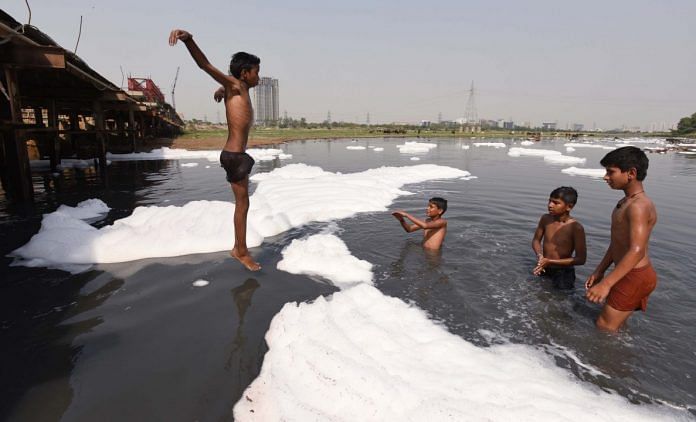The agreement involves the construction of a plant that has the capacity to treat 20 million litres of sewage per day for further use at a refinery.
New Delhi: It was almost déjà vu. Two years apart, the same parties have signed an agreement for the same project on the same optimistic note, triggering the question why.
Last month, the union government’s National Mission for Clean Ganga (NMCG) and IndianOil signed a memorandum of understanding (MoU) to set up a sewage treatment plant that will supply cleaned up water to the oil behemoth’s Mathura refinery in Uttar Pradesh, an echo of a similar agreement signed in 2016.
The agreement involves the construction of a plant in Mathura that has the capacity to treat 20 million litres of sewage per day, and is part of a larger plan to reduce the strain of non-potable uses on the river’s water and mitigate sources of pollution.
It envisages a nine-kilometre pipeline that will carry treated water to the refinery, which currently uses fresh water from the Yamuna.
Under the agreement, IndianOil will purchase the water at Rs 8.70 for every 1,000 litres.
The MoU was first signed in August 2016, on the watch of then minister for water resources, river development and Ganga rejuvenation Uma Bharati. The ministry is now headed by Nitin Gadkari, who hailed the agreement last month as a major achievement in the government’s bid to derive wealth from waste.
Let’s talk cost
According to the first MoU, details on the cost of the project and its operation and maintenance were yet to be worked out, but the new one lays out the exact distribution: While the water ministry will bear the entire capital cost of Rs 162.4 crore, IndianOil will pay operation and maintenance costs for 15 years, totalling around Rs 82.4 crore.
It was these very discussions — on the exact financial responsibilities — that led to the delay, the NMCG told ThePrint.
“We had to work out the modalities. How much money is required, who will finance the project etc,” Hitesh Kumar Makwana, executive director (projects) at NMCG, told ThePrint.
“The DPR (detailed project report) had to be made, two-three agencies are involved, the tender process had to be completed… IIT-Roorkee also scrutinised the project…it took about 1.5 years to do all that,” he said.
Makwana added that the first MoU was to express “intent” to undertake the project, saying the government now had a “plan”.
However, Shashi Shekhar, who served as secretary in the water resources ministry when the first MoU was signed, said two years was “a long time” to chalk out the details of the project.
“The concept to involve the industry had already gained ground, so there has been a definite delay,” he added.
According to Shekhar, there were other factors at play that caused the project to hang fire — IndianOil wasn’t very keen on participating in the project initially, he said, and the project didn’t get enough support from Bharati either.
Other experts agreed, saying that making a DPR as well as the tendering process usually took between six months and a year, after which the construction of the treatment plants can begin.
“It usually takes about six months to one year for bigger projects, but this doesn’t seem like a very big project,” said Mallika Bhanot, a member of Ganga Ahvaan, a citizens’ forum for the river’s preservation.
A former consultant with the water resources ministry echoed Bhanot, saying that, on average, it took three months to make the DPR and as many for the tendering process, after which a project could begin to be built.
All of this translates to the fact that no work has begun on the treatment plant yet, costing an urgent initiative to protect India’s choking rivers precious time. A river whose water was once described as better than nectar by Mughal emperor Babar, the Yamuna, a tributary of the Ganga, resembles toxic sludge for a vast stretch from Delhi onwards. Pumped with sewage and industrial waste, several sections of the river can reportedly only host the most resilient of bacteria.
In Agra, tourists visiting the Taj Mahal are thrown off-guard by the sight of the abused river flowing alongside the heritage monument.
A major hurdle in cleaning the river, activists claim, is the inadequate sewage treatment capacity of settlements on its basin. According to a 2016 water ministry report, the Central Pollution Control Board had assessed that Delhi alone generated wastewater to the tune of 3,800 million litres a day (MLD), against a treatment capacity of just 3059.48 MLD.






